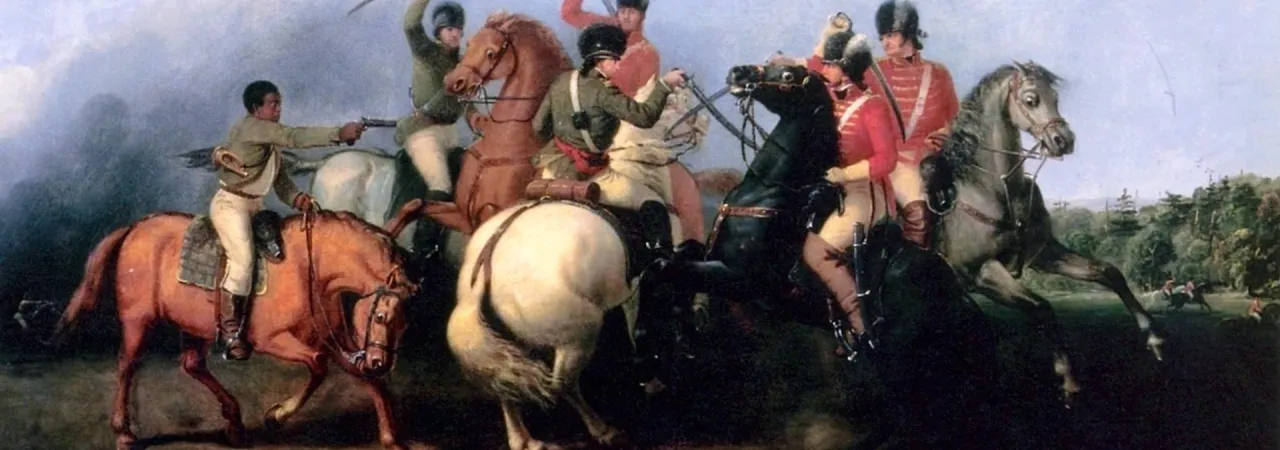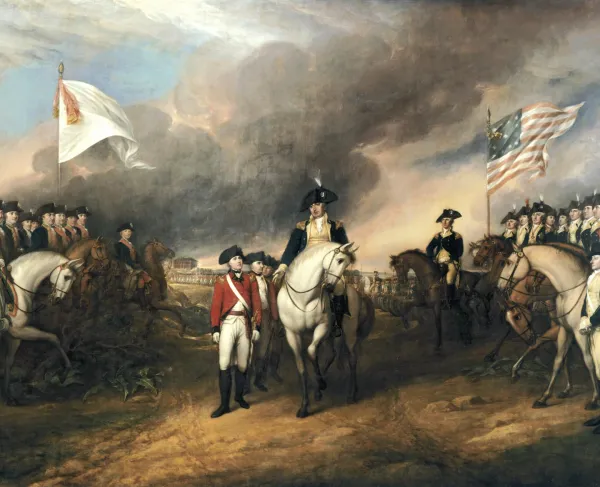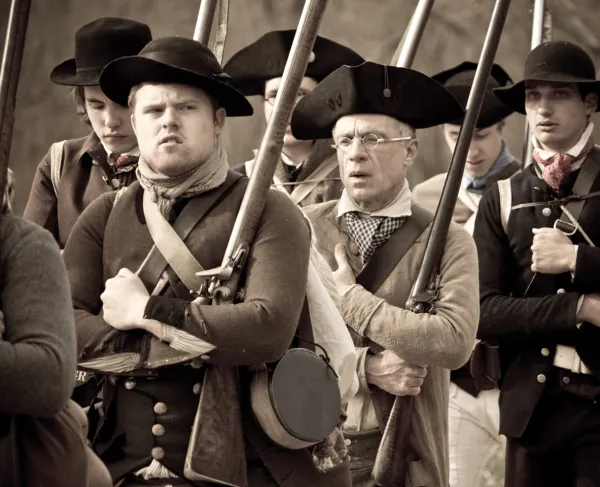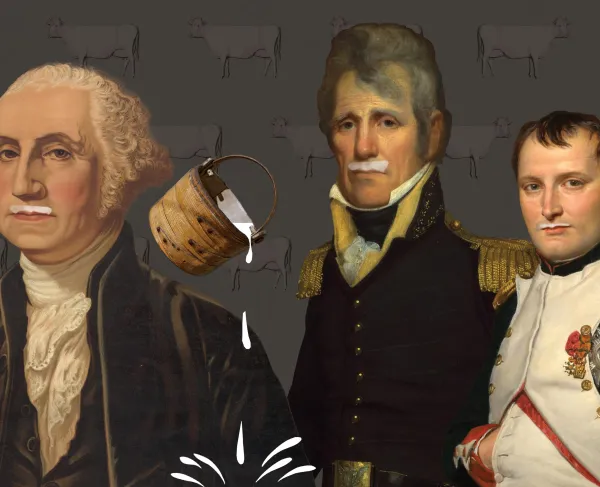
"The Battle of Cowpens" by William Ranney, 1845.
Many historians, students, or even casual enthusiasts of the American Revolution in the south are familiar with any one of the iconic paintings of Sergeant William Jasper of the 2nd South Carolina Continentals fearlessly securing the colors of the fort on Sullivan’s Island in the face of incessant bombardment by the ships of the Royal Navy during their unsuccessful 1776 bid to capture Charleston. Jasper would lose his life in assaulting the British works at Savannah, Georgia, the city they had captured some ten months earlier. Whereas in 1776, the valiant sergeant dodged British cannonballs, it is entirely possible that at Savannah he was felled by a shot fired from a fellow southerner. What had changed in three years of war?
America’s Civil War was hardly the first time Americans fought against each other. From Lord Dunmore in Virginia to Peter Chester in West Florida, royal governors in the south were faced with the daunting prospect of securing their governments with a minimal presence of British military assets on hand. The British Army, while well-trained and professionally led, was small, especially by European standards. Britain, being an island nation, had survived and defended itself and its possessions primarily through sea power, increasing its land forces when necessary in time of actual war. During the preceding 150 years or so, those wars fought in North America involved raising local troops from the different provinces. The French & Indian War saw that happen on a scale previously unheard of, with forces that included a certain Colonel George Washington from Virginia.
The difference between the French & Indian War and the American Revolution was that many of the veterans of the former war, or their children, were now in open rebellion against that same British government, and its military. With no infrastructure or support system in place to arm, equip and uniform and raise troops, the early efforts and results were somewhat predictable. Lord Dunmore in Virginia attempted to cobble together a force of militia from Norfolk, a white corps styled the Queen’s Own Loyal Virginia Regiment, and a Black unit known as the Ethiopian Regiment. When added to the few British troops of the 14th Regiment on hand, they proved no match for their rebellious counterparts. Defeated at Great Bridge over the Elizabeth River near Norfolk on December 9th, 1775, Dunmore’s force was eventually reduced to serving onboard a patchwork collection of shipping off Norfolk and eventually Gwynn’s Island. After being driven from the latter place in July 1776, Dunmore’s small Loyalist force made their way to New York City to join the British forces gathering there under Lieutenant General William Howe. Dunmore’s Loyalist units would take no part in that campaign, at least as an organized force, being disbanded on Staten Island shortly after their arrival. It is important to recognize however the effort to raise a full regiment of armed Black troops from amongst escaped slaves. These men fought as much for their personal freedom, as promised by Dunmore, as for the support of the British crown. Illness swept through their ranks throughout the first half of 1776 however, killing far more men by fever than enemy fire.
Events in North Carolina followed a similar course, with Royal Governor Josiah Martin attempting to raise the royal standard and draw a body of men to him in anticipation of a British force under Lieutenant General Henry Clinton arriving from New York, joined to one under Lord Cornwallis coming from Britain. Many of those responding to the call were emigrants from Scotland, so many that their commander was Brigadier General Donald McDonald, who likewise held a commission as major in the Royal Highland Emigrants. By February 27th, 1776, the group had grown restless, 800 men ready for battle, though there were not nearly arms enough for all. With what muskets and rifles they possessed, added to eighty Scottish swords, McDonald’s army waited no more, defying the pleas for patience from Governor Martin and advancing on Moore’s Creek Bridge where their well-entrenched foe awaited them: “the word of Ralliment being KING GEORGE AND BROAD SWORDS, upon hearing a Shot on the plain in our front…the Signals for an Attack was given, which was Three cheers, the Drum to beat, the Pipes to play.” Much like at Great Bridge, the assault was doomed from the start, with McDonald and most of his principal officers captured. North Carolina would remain quiet for the next four years.
South Carolina and Georgia endured no such similar fighting, although Loyalists appeared to hold sway in the Ninety Six District of South Carolina in late 1775. By the middle of 1776 however, both colonies were firmly pried away from British control. The two seldom-mentioned colonies, East Florida and West Florida remained firmly in British control, both having British garrisons in their capitals. Indeed, it was in East Florida where a truly well-organized counter-revolutionary Loyalist force took shape in 1776. Under the leadership of Thomas Brown, a recent emigrant to the “ceded lands” of western Georgia, a six-troop mounted corps was raised for the defense of the Georgia-East Florida border area. Known as the East Florida Rangers, the corps was raised under the authority of Governor Patrick Tonyn, being uniformed and equipped through his warrants on the Treasury in England. The corps made numerous incursions across the border into Georgia, gathering cattle and horses to bring back to the British garrison at St. Augustine. They likewise repelled invasions from their neighbor to the north, particularly at Alligator Bridge in June 1778.
At Alligator Bridge, the Rangers were joined by a new Loyalist corps, formed from recent arrivals from South Carolina. This corps, the South Carolina Royalists, was very unlike Brown’s East Floridians. The Royalists, commanded by Colonel Alexander Innes (a former secretary to South Carolina Royal Governor Lord William Campbell), was a part of the “Provincial Establishment,” which the British had established in 1775 to organize regiments raised in America as a part of the army. Whereas units like those raised by Governors Dunmore, Martin, and Tonyn were useful locally, they were in essence little better than embodied militia. Provincials however were paid, armed, equipped, uniformed, fed, and disciplined the same as British soldiers, and were liable for service anywhere until the end of the war.
The Provincial officers and soldiers would eventually bear the burden of the fighting in the south, as the scene of war shifted there from the north with Lt. Col. Archibald Campbell’s capture of Georgia at the end of December 1778. Campbell’s expedition included four battalions of Provincials from New York and New Jersey, around which new southern corps could be raised. The British post at Savannah would attract more refugees from the Carolinas, some making it successfully, others not. The Battle of Kettle Creek in February 1779 was one such example. While the Loyalist leader was killed in the action, enough of his followers survived and reached Savannah to form a second battalion to the South Carolina Royalists, and a new corps. the Royal North Carolina Regiment.
The North Carolinians would be commanded by a wealthy Loyalist named John Hamilton. Hamilton had fled North Carolina by ship to New York City with a number of friends and family in 1777. He had accompanied Campbell’s expedition to Savannah and now eagerly undertook putting his new corps into order. Both the North and South Carolina units would initially be a mix of mounted and foot soldiers until all served as infantry later in 1779. The 2nd Battalion of the South Carolina Royalists, led by Lt. Col. Evan McLaurin, would never achieve the necessary numbers (generally 500 men) to continue their existence, and they were subsequently merged into their first battalion by the end of 1779.
Not to be left out, Thomas Brown’s East Florida Rangers had joined the invasion of Georgia in January 1779, marking their departure from East Florida. Since East Florida was no longer threatened, the corps was disbanded in June 1779 and re-raised the following day on the Provincial Establishment, under the new name King’s (Carolina) Rangers. Brown would continue to lead the unit as its lieutenant colonel. Georgia, being the new seat of British power in the south, raised its own Provincial units, notably the Georgia Loyalists under Major James Wright (son to the royal governor) and two troops of light dragoons. Major Wright’s corps would spend most of the war garrisoning Savannah and eventually be merged in 1782 with Brown’s corps.
Sir Henry Clinton’s capture of Charleston in May 1780 would be the British high-water mark in the war in the south. New recruits flocked to the existing Provincial corps, greatly expanding their ranks. Brown’s King’s (Carolina) Rangers would garrison Augusta, Georgia. There they withstood a siege led by Georgia Militia Colonel Elijah Clarke in September 1780 but capitulated to a second attempt in June 1781 by Lt. Col. Henry Lee. The corps was mostly exchanged soon afterward and stationed in the Savannah area until that city’s evacuation in 1782.
The South Carolina Royalists and Royal North Carolina Regiment would mostly continue their service in the Carolinas, although Hamilton and some of his men would accompany Cornwallis to his (and their) fate at Yorktown in 1781. New small Provincial units continued to form and typically be absorbed into one or the other of these units, such as the South Carolina Light Dragoons, North Carolina Independent Dragoons, North Carolina Highlanders, and South Carolina Rangers. All told, over 3100 officers and men served in the three major southern Provincial units. Provincials even ended up being raised in West Florida, with a three-troop cavalry unit known as the West Florida Royal Foresters, fighting against the Spanish at such notable battles as Baton Rouge, Mobile, and the Siege of Pensacola.
Over a thousand men, many of them Continental Army prisoners from the south or captured sailors, would be enlisted by British officer Lord Charles Greville Montagu, who had served briefly as royal governor of South Carolina in the 1760s. Montagu’s Provincial corps, known as the Duke of Cumberland’s Regiment, consisted of two battalions in 1783 and served on the island of Jamaica. Its purpose was to raid the Spanish possessions in Honduras and Nicaragua, not fight against their fellow Americans. The corps was well-led and disciplined and at the end of the war, many settled in British possessions or enlisted in the British Army as a career. Continental Army deserters and prisoners would serve in virtually every Provincial unit raised, while the same was true of former crown soldiers in Continental ranks.
While the British preferred having Provincial units serving alongside them, a full-time military life was not desirable for everyone. Georgia and the Floridas would all have militia regiments, corps composed of all able-bodied (generally) white inhabitants who would serve for brief periods, typically providing their own arms, accouterments, clothing, etc. It was the militia of the Carolinas however that provided the most manpower, however unreliable they might be, something complained of by the commanders on both sides. After the fall of Charleston, Sir Henry Clinton appointed the active Scottish officer Patrick Ferguson as inspector of militia. Using his northern Provincial unit, the American Volunteers, as a sort of training module, Ferguson raised hundreds of men as he made his way into the interior of the country, eventually falling, along with many of his militia, at the Battle of King’s Mountain on October 7, 1780. Led on afterward by Brigadier General Robert Cunningham, the Loyalist South Carolina Militia, including a troop of armed black cavalry, served until the final evacuation of Charleston.
North Carolina Militia came into its own starting in 1780, when Loyalist Colonel Samuel Bryan raised an embodied militia regiment of some 600 that joined Cornwallis’ army in South Carolina. With the occupation of Wilmington in 1781, more traditional county militia units were raised, led most notably by Colonel David Fanning. By all accounts one of the most ferocious figures of the war, he led some 1,200+ North Carolina Militia on a daring expedition to Hillsborough, capturing the rebel governor, Thomas Burke, along with some 200 other politicians, soldiers, and militia. It was no doubt one of the greatest all-Loyalist exploits of the war.
The evacuation of the south led to the disbanding of the militias and eventually the Provincial forces, many of whom settled on grants of land in Nova Scotia and elsewhere.
Southern Loyalists fought in almost every major engagement in the south, including the Siege of Savannah, Siege of Charleston, Siege of Ninety Six, Augusta, Brier Creek, King’s Mountain, Cowpens, Hanging Rock, Rocky Mount, Blackstocks, Camden, Hobkirk’s Hill, Long Canes, Enoree and countless others. Many of these battlefields may be visited today, scenes of hard fighting between not only the British and their foes, but of Americans against their former friends and neighbors. On June 27th, 1780, Lt. Col. Joseph Robinson of the South Carolina Royalists published the following words to his friends in that province: “Go on, proceed, be steady in your principles, the time is at hand when Peace, Prosperity, and tranquility will amply crown your virtuous behaviour: When he horrid Alarms of War will be no more; when you will cultivate your Lands, and sit with rural pleasure under the Shade of your own Vine…” That time would not happen until 1783, and for many, it was too late.
Related Battles
1
102
2
50
37
220
90
1,018
149
868
182
300






